The Ruskin Museum
The Ruskin Museum in Coniston village was opened in 1901 as a tribute to the Victorian polymath John Ruskin. It is both a memorial to its namesake and a treasure trove of local history. Established through the efforts of W.G. Collingwood and Ruskin’s heirs, the museum has evolved into a space where art, history, and industrial heritage intertwine. From its origins to its modern-day features, the museum offers a fascinating journey into Ruskin’s legacy and Coniston’s rich past.
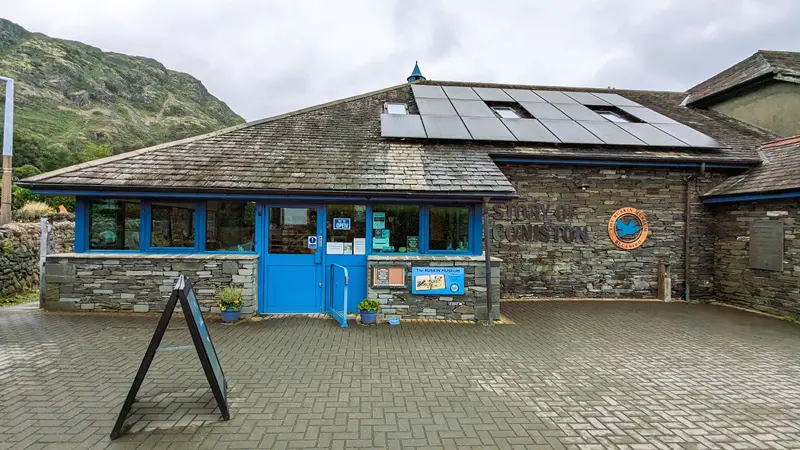
Origins of the Ruskin Museum
Following John Ruskin’s death on 20 January 1900, W.G. Collingwood organized a memorial exhibition in the Assembly Room of Coniston Institute. The success of the exhibition paid off debts on the Assembly Room and raised funds to construct a permanent memorial. By August 1901, the Ruskin Museum opened its doors, inaugurated by Canon Rawnsley, a close associate of Ruskin.
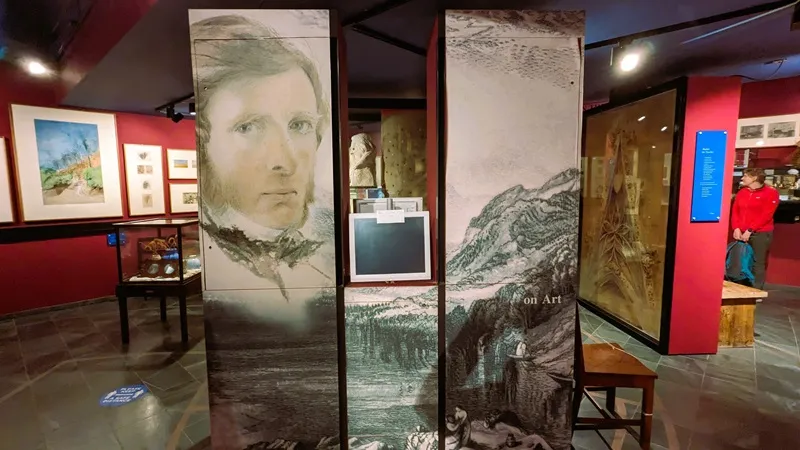
Initially, the museum housed watercolours, drawings, sketchbooks, manuscripts, and memorabilia donated by Ruskin’s heirs, the Severns, and Collingwood’s circle. Many of these items reflected Ruskin’s artistic talents and his wide-ranging intellectual pursuits. Over the years, the museum expanded its collection to include artefacts highlighting the history of Coniston and its industries.
A Changing Role Through the Decades
In the 1980s, the museum was identified as at risk due to outdated facilities. A comprehensive £850,000 redevelopment, funded by organizations including the Heritage Lottery Fund, secured its future. Reopening on 1 May 1999, the building incorporated Ruskinian principles of using local materials such as Coniston stone, slate, and copper. A decorative slate floor conceals a modern hypocaust heating system, combining tradition with innovation.
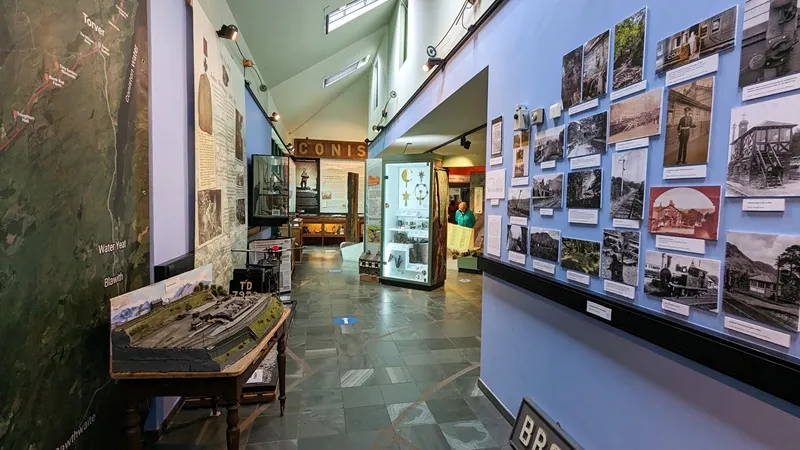
Ruskin’s Legacy on Display
The museum showcases many of John Ruskin’s ideas and works, offering visitors insights into his philosophies on nature, society, and the arts. His belief in the power of art to improve lives is evident in exhibits on the Langdale linen and lace industries he supported to provide employment for local women. His personal artworks, including detailed watercolours and drawings, highlight his skills as a draughtsman.
A notable exhibit is Ruskin’s Harmonicon, a musical instrument made from stones, resembling a xylophone. This unique artefact underscores Ruskin’s fascination with the interplay between art and nature. The museum’s numerous interactive displays, videos, and audio guides, available in multiple languages, enrich the visitor experience.
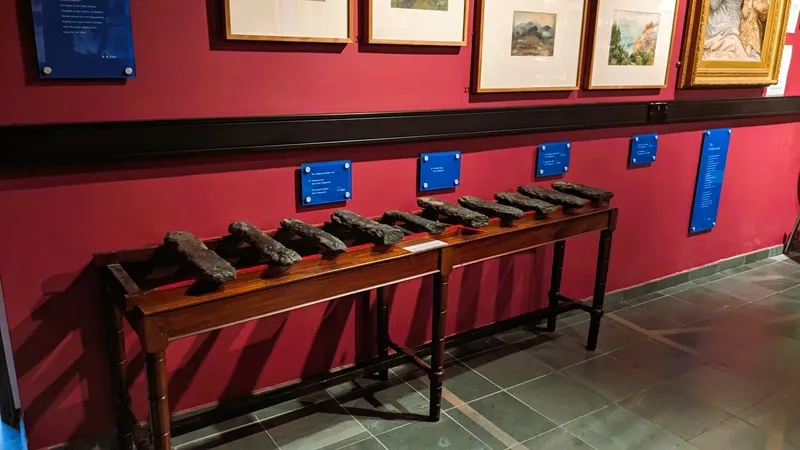
Coniston’s Industrial Heritage
The Ruskin Museum also delves into the area’s industrial history, particularly its copper and slate mining industries. A detailed exhibition includes models of local mines and rock specimens viewable through magnifying glasses, offering a hands-on approach to learning about the region’s geology. These exhibits illustrate the role of industry in shaping Coniston’s landscape and community.
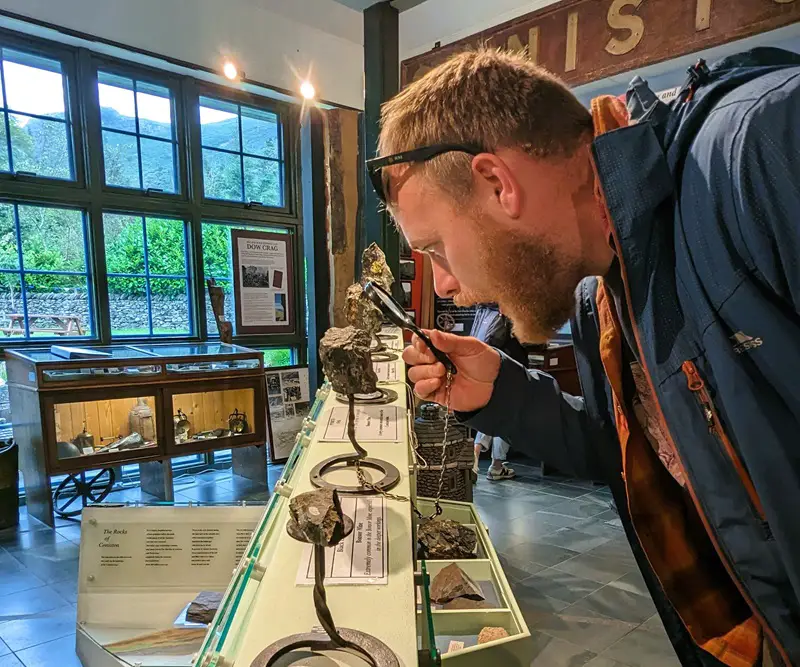
Donald Campbell and the Bluebird K7
A standout feature of the museum is its dedicated wing to Donald Campbell, the speed record holder. Campbell broke seven world water speed records, four of them on Coniston Water. The centerpiece of this exhibit is the Bluebird K7, the jet-powered hydroplane in which Campbell tragically crashed in 1967 during an attempt to break his own record.
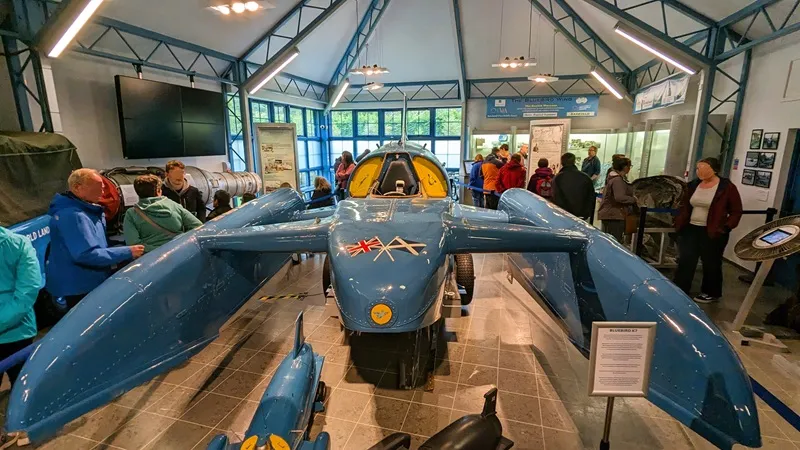
The Bluebird K7 was donated to the museum in 2006 by the Campbell Family Heritage Trust, on the condition that it be restored to its pre-crash condition. The Bluebird Project undertook this meticulous restoration, funded by public and business donations. On 9 May 2024, the Bluebird K7 returned to Coniston, where it now stands as a tribute to Campbell’s daring feats. The museum is also developing a film exhibit to document the restoration process and the story of Campbell’s achievements.
Highlights at The Ruskin Museum
Visitors can enjoy a variety of exhibits and activities at the museum. A section on Coniston’s history traces the area’s development from the Stone Age to the modern era, while the museum shop offers souvenirs, Ruskin-related books, and locally inspired items. For those arriving by car, free parking is available along the road behind the museum.
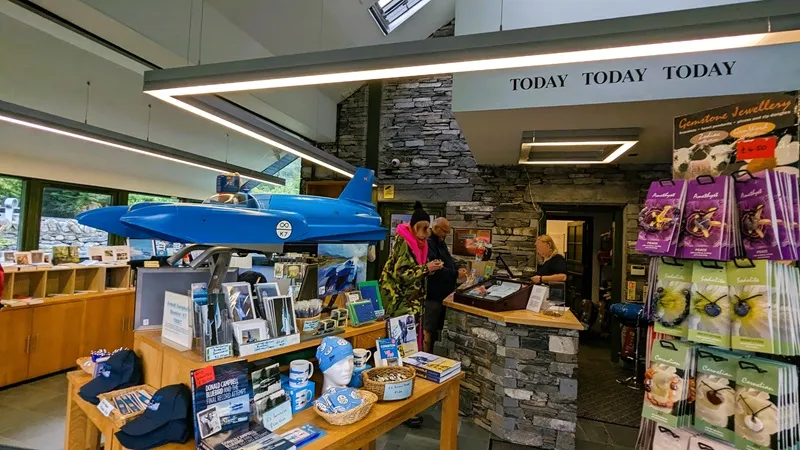
Although the museum’s collection is vast, it offers an engaging experience. Art enthusiasts can marvel at Ruskin’s work, while history buffs can delve into exhibits on mining, fishing, and Herdwick sheep husbandry. The museum balances its dedication to Ruskin’s legacy with a broader narrative of Coniston’s cultural and industrial history.
For workshops and events at the Ruskin Museum see What’s On in the Lake District
Opening times:
The Ruskin Museum is currently operating on its winter hours.
Tuesday – Sunday 10:30 am. Last Admission 2:30pm
Admission prices:
Adults – £10.00
Children (under 16) – £6.00
Family (2 adults, 2 children) – £30.00
children (under 5) – FREE
Address: Yewdale Rd, Coniston, Cumbria. LA21 8DU. Tel: 015394 41164
Related Links: www.ruskinmuseum.com
More Visit Cumbria pages of interest:
- John Ruskin
- Coniston Village
- Coniston Water
- South Lakes Area Menu
- Windermere lake
- The Lake District National Park
- Guide to Keswick
Grid Ref : SD 302978
Planning a visit to The Ruskin Museum, Coniston? Enter your dates below to see available accommodation on a handy map. Zoom out for more choice.
